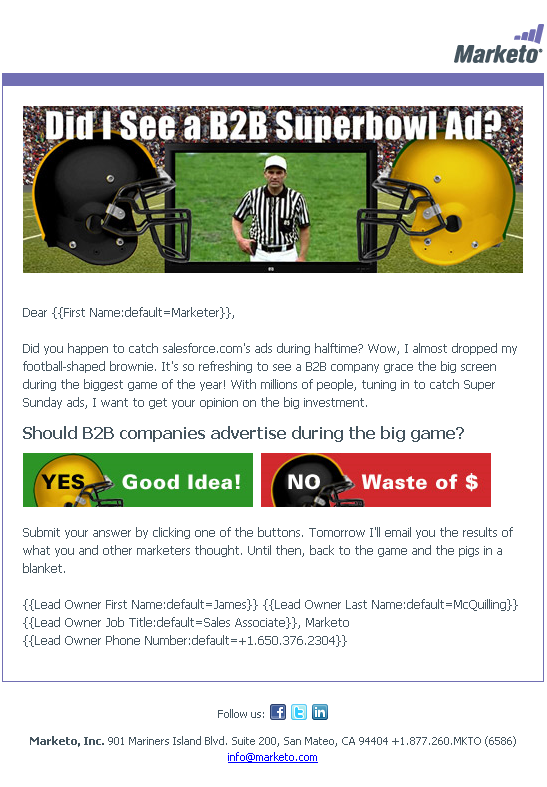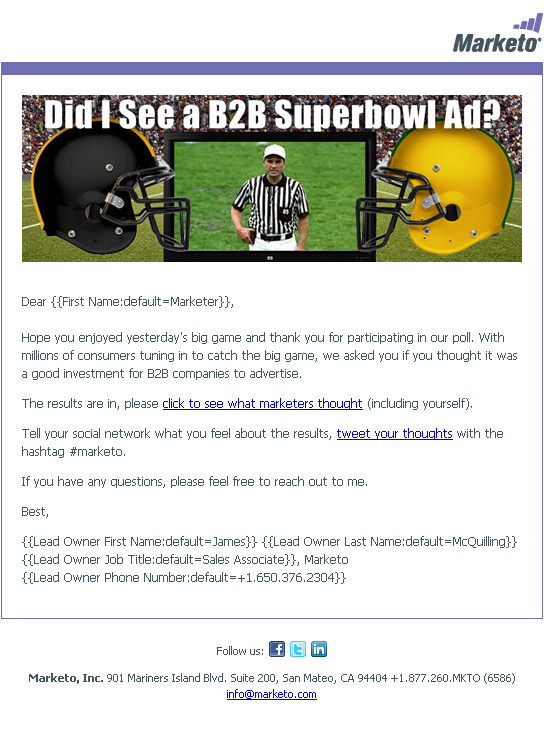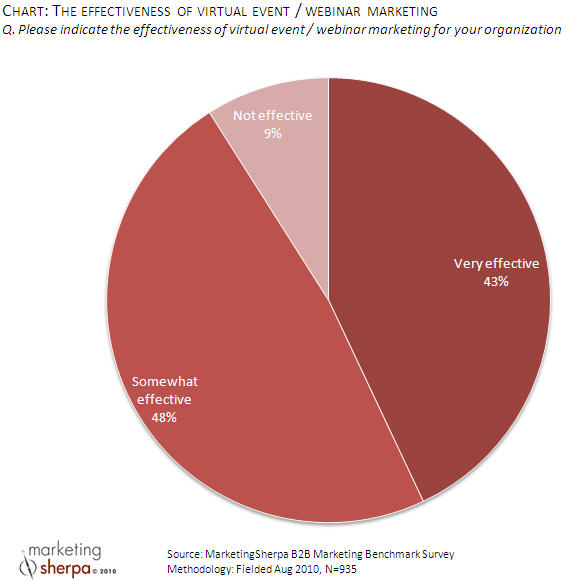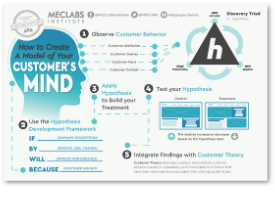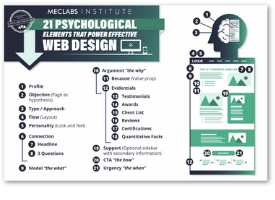From Corporate America to Entrepreneur: Giving up steady pay for a steady say
Last year I interviewed Barb Girson for a MarketingSherpa B2B newsletter story, “Marketing Automation Tool Drives List Growth, Boosts Registrations 664%, (members’ library)” on how she was able to dramatically improve her event registrations. The focus of our conversation was on the case study, but from talking about her background I knew I wanted to revisit her story because she’s managed to pull off a pretty tough feat.
She spent ten years in the corporate environment before finding herself downsized in 2008. She used her experience to found My Sales Tactics, a professional development firm with a focus on international direct selling training, and is now a successful entrepreneur.
Marketers tend to have a pretty full tool box of skills, but sometimes the toughest “product” to tout is yourself. Here’s Barb’s story about how she met the challenge of founding her own company in a difficult economy and achieved success.
Did you find the transition from the corporate world back to entrepreneurship — both making the decision and actually doing it — difficult?
Barb Girson: The most difficult part of transitioning from corporate work and back to entrepreneurship was going from giving up the promise for steady pay, but gaining a steady say. This means you have a say in where, when, how you are working — controlling your own schedule and having more flexibility.
This freedom has a price.
After reaching the peak of my career salary, having paid vacations and all of the other employment perks, I contemplated the pros and cons. In the early months of making my business plan, I would wake up in a full sweat and panic in the middle of the night wondering, “Can I do this? Could I meet my financial obligations and overhead and pay myself a salary?”
To ease the transition I did some freelance/subcontract work for several other business owners and created an alliance where I could work for another firm one day a week while developing my own content on the side. This setup helped ease the stress of needing immediate cash flow.
The defining moment was one December when my accountant pointed out that I had matched my husband’s teaching salary while freelancing part-time without even having advertisements or a website. My accountant said, “If you are going to do this, then you need to make investments and build the business.”
Within two and a half weeks I crystallized my thoughts, notes, and research into a business plan and registered my business. One of my first goals was to develop an email list from scratch and to build a website — which is critical in today’s environment. Within six months my website was launched.
For me, the bottom line to remember is my three C’s:
- Choice — your future belongs to YOU!
- Courage — it takes courage to walk down the sidewalk and take a different path!
- Career — it is your career. Steer it!
Do any particular challenges you’ve faced as an entreprenur stick out?
BG: Entrepreneurs tend to be tough on themselves and place high mental demands on themselves. This is both a blessing and a curse.
Being a solo entrepreneur, or small business owner with limited resources, meant that I needed to learn to accept my best efforts and embrace my errors. At first, marketing without an entire department to assist with graphics, execution and measuring effectiveness was a challenge.
As my business grew, I built a team of entrepreneurs who support me in various functions. While we have grown and evolved as a team, the push to remain resourceful and innovative has been essential.
To get past these challenges, it is helpful to:
- “Focus on making progress, forget about perfection.” Perfection often paralyzes people. (Cynthia Kersey, Unstoppable Women)
- Mistakes will happen. Accept, Apologize and Stay in Action.
- Reach a point of “good enough.” For example, a business letter, a presentation, a marketing brochure … prepare, give your best, and improve as you go. That means short print runs on new collateral.
- If you are using email/event marketing to build your sales, use a trusted service provider to get the support of an entire corporate team — from sourcing graphics, to monitoring, measuring, and segmenting. Many of the functions that used to be accomplished with several departments are now handled within this service.
During our interview last year you mentioned a “test” you’re running to actually call people who’ve opted-out of your email contact list. Tell me more about that effort and what results you are seeing …
BG: I have not had enough results to know yet if this test is cost effective. However I do have one interesting story.
One of my subscribers replied by email after my assistant called her to make sure she wanted to unsubscribe and said:
“I’m curious about having your assistant call those who unsubscribe. I’m sure that takes an enormous amount of time, which increases your cost. Does it pay for itself to have her call them? I’ve never considered doing that with my own customers who unsubscribe. I just write them off as uninterested and look for new people.”
I asked her how the phone call made her feel.
She replied, “Actually, if you had theoretically asked how I’d feel, I would have thought it was too high-pressure … but in reality, yeah, I felt like you really cared about why I was leaving. And it made you stand out from all the other lists I dropped out of. Good luck!”
My goal is to communicate that my subscribers are important and their opinions are valued. Maybe they will remember me if they have a need for my service in the future.
You’ve been successful in tough career moves — going from a large company with a large support staff to becoming an entrepreneur with a very streamlined staff. Were any lessons learned, or do you have career advice for anyone who is either contemplating, or attempting, what you’ve accomplished?
BG: Lessons learned:
1. Keep start up costs low
- Keep your overhead low. If possible, work out of your home. This is more acceptable today than ever before and technology gives start ups the advantage that only big corporations enjoyed before. My goals were to have a business that I could take anywhere.
- Do your competitive research to get an idea what the market will bear for your products and services and find your unique niche. I hear many entrepreneurs ramble about all the things they can do. The old marketing adage goes, “When you try to speak to everyone you reach no one.” This is especially true in today’s competitive, crowded business climate.
2. Focus on the actions that result in your income rising
- Determine the quickest way to cash flow and build your services from there.
3. Be careful not to take-on too much too soon. Don’t offer too many services too soon. Start with a few key services that you can do well and build from there.
4. Be prepared to put forth a great deal of effort to get your business going.
- Long hours are often required until you can afford to build a team. But they are your hours. You will need to balance the time you spend on the computer with the time you spend meeting people who can directly or indirectly help you build your sales.
5. Three critical skills in today’s environment:
- Networking Skills — build a strong supportive network that will put their name on line to recommend you to others.
- Sales Skills — develop a way to authentically and comfortably sell yourself. Invest in training – you will always get a great ROI (return on investment) when you invest in yourself.
- Technical Skills — saves you money and time.
Take advantage of service providers to help you market like the big guys — email marketing, event marketing, and surveys.
I am pleased and proud to say that my business is not only surviving — it is thriving through this economic climate. The time and energy that went into building the foundation is paying off, both in the sense of accomplishment and financially.
It is fulfilling to help others with the work that we do — we help companies, teams and entrepreneurs gain confidence, get into action and grow sales by designing and delivering custom sales/email/event marketing training and coaching programs. I think it has happened because I have been transparent with my story, worked hard, and involved my client base in a ramp up process.
Related resources
Email Marketing: Show me the ROI
Ten Numbers Every Email Marketer Should Commit to Memory
Interactive Channel for Sales Support Materials: 6 Strategies to Cut Costs and Improve Measurability (Members’ library)
Lead generation: Real-time, data-driven B2B marketing and sales
Resources on Transparent Marketing
Barb’s vendor, Constant Contact
photo by San Sharma




